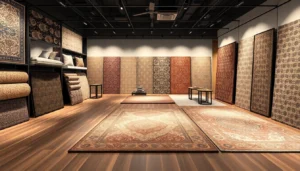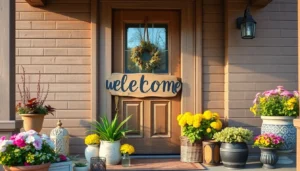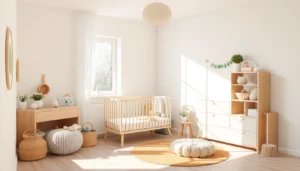Introduction to Period Sash Windows
Period sash windows are a defining feature of historic British architecture, embodying elegance, craftsmanship, and cultural heritage. These windows, often found in Georgian, Victorian, and Edwardian homes, are more than mere functional elements; they are integral to the aesthetic and historical authenticity of period properties. Their distinctive design, craftsmanship, and materials reflect the architectural trends and social customs of their respective eras. For homeowners and restoration specialists alike, understanding the significance, features, and modern adaptations of period sash windows is essential to preserving heritage while ensuring contemporary performance.
In this comprehensive guide, we explore the historical significance of sash windows, analyze their different styles across eras, provide insights into selecting authentic materials, and detail best practices for installation, maintenance, and legal compliance. Whether you are restoring a characterful Georgian townhouse or upgrading a Victorian residence, this article offers valuable, data-driven advice to make informed decisions that combine aesthetic integrity with energy efficiency and durability.
Historical Significance and Architectural Style
Originating in the late 17th century, sash windows rapidly became a hallmark of British residential architecture, symbolizing sophistication and technological advancement. These windows historically consisted of two or more sashes—frames fitted with glass panes—that slide vertically within a shared frame. Their development coincided with advances in glass-making and woodworking, allowing for larger panes, improved insulation, and more intricate woodwork.
Throughout their evolution, sash windows have served as a testament to Britain’s architectural shifts—from the Georgian emphasis on symmetry and proportion, through Victorian opulence, to Edwardian simplicity. The style and construction of sash windows not only reflect aesthetic preferences but also embody social change, technological progress, and craftsmanship traditions.
Modern adaptations preserve this heritage by integrating contemporary materials and energy-efficient features, allowing the preservation of historic character while meeting current performance standards. For anyone interested in heritage conservation or appreciating the artistry of traditional craftsmanship, period sash windows are a vital element that defines the cultural fabric of Britain’s architectural history.
Styles and Eras of Sash Windows
Georgian, Victorian, Edwardian: Distinctive Characteristics
The stylistic diversity of sash windows is most apparent when examining their variations across different architectural periods. Each era introduced unique features that are now classic identifiers:
- Georgian Sash Windows: Dating from the late 17th to early 19th centuries, Georgian sash windows are characterized by their strict symmetry and proportion. They typically feature two equal-sized sashes that slide vertically, with each sash divided into six or eight panes by narrow glazing bars. The top sash often remains fixed in some variations, and the frames are usually slim and elegant, emphasizing balance.
- Victorian Sash Windows: These are often larger and more ornate. Victorian sash windows commonly include multiple panes, with a traditional configuration of 12 or more small panes in each sash, emphasizing intricate visual appeal. They often feature decorative horns (small fillets at the sash joints), heavier frames, and sometimes incorporate curved or bay window styles.
- Edwardian Sash Windows: Known for a more restrained and refined aesthetic, Edwardian sash windows generally feature larger panes with fewer divisions, such as a single or double large panes within each sash. They tend to have simpler, cleaner lines with less decorative detail but maintain the classic sliding mechanism.
Identifying Different Period Features
Recognizing period features is crucial for accurate dating and restoration. Identification methods include:
- Profile of the Sash: The shape and dimensions of the sash can indicate its period, with Georgian sashes often having narrower profiles and Victorian ones being more robust.
- Glass Style: The glass pane size, thickness, and presence of wavy (uneven) or clear glass can provide clues—vintage glass tends to be irregular, whereas modern replacements are usually uniform.
- Sash Horns and Pulley Systems: Decorative sash horns and pulley mechanisms are typical of Victorian styles, while earlier Georgian windows might have less ornate features.
Matching Sash Style to Property Era
Appropriate matching of sash window styles to property eras is essential for maintaining architectural integrity. For example, installing a Victorian-style sash in a Georgian property may look out of place and diminish historical authenticity. Conversely, sympathetic modern recreations can enhance restoration projects where original features are missing or damaged. Consulting heritage records or architectural historians can aid in accurate matching.
Choosing the Right Materials and Design
Traditional Timber vs. Modern Alternatives
While the original sash windows were crafted from timber, modern manufacturing offers alternative materials like uPVC and aluminum. Each has its pros and cons:
- Timber: The authentic choice, offering natural beauty, excellent thermal insulation when properly treated, and easy restoration. The key is selecting high-quality hardwoods such as oak, mahogany, or pitch pine, which age gracefully.
- uPVC and Aluminum: Lower maintenance, better resistance to weather, and cost-effective. However, authentic period aesthetics can be harder to achieve unless bespoke options are selected. Modern composites can mimic timber’s appearance while offering enhanced durability.
Design Options for Authentic Aesthetics
Design choices significantly impact the period authenticity of sash windows:
- Pane Configuration: Reproducing original glazing patterns, whether six over six or a multi-pane Victorian style, is essential for period accuracy.
- Decorative Details: Adding sash horns, astragal bars, and moulded surrounds can enhance historical appearance.
- Glass Selection: Using double or triple-glazed units with beveled or antique-style glass can improve insulation without sacrificing aesthetic appeal.
Draught Proofing and Energy Efficiency
Historical sash windows are notorious for drafts, which can compromise comfort and utility costs. Modern draught-proofing techniques—such as sealed sashes, brush seals, and secondary glazing—offer significant energy savings while preserving the window’s visual authenticity. Implementing these measures ensures that heritage properties meet contemporary performance standards without damaging their historic charm.
Installation, Restoration, and Maintenance
Professional Fitting vs. DIY Repair
Proper installation is critical to maximize the lifespan and performance of sash windows. While DIY repairs may seem cost-effective, precision in fitting, sealing, and adjusting sash weights demands expertise. Professional installers familiar with heritage requirements can ensure accurate restoration, proper sealing, and compliance with conservation standards, reducing long-term costs and preserving aesthetic integrity.
Restoration Techniques for Heritage Preservation
Restoration involves meticulous craftsmanship aimed at retaining original components or faithfully recreating missing features. Techniques include:
- Stripping old paint and coatings: Careful removal to prevent damaging the wood.
- Repairing or replacing damaged timber: Using matching hardwoods, traditional joinery, and corrosion-resistant fixings.
- Reinstating sash cords, weights, and pulleys: Ensuring smooth operation while respecting original mechanisms.
- Restoring or replacing glazing: Employing period-correct glass and ensuring proper sealing.
Maintenance Tips for Longevity
Regular maintenance is vital for preserving sash windows’ aesthetics and functionality. Key practices include:
- Annual inspections for timber rot, paint deterioration, and hardware function.
- Repainting with breathable, period-appropriate paints to prevent moisture ingress.
- Lubricating pulleys and hinges to ensure smooth movement.
- Addressing any signs of timber decay promptly with specialist repairs.
Cost, Regulations, and Better Investment
Pricing Factors for Period Sash Windows
The cost of period sash windows varies widely depending on materials, size, style complexity, and craftsmanship. Factors influencing pricing include:
- Material choice: Timber units tend to be more expensive upfront than uPVC.
- Design intricacy: Multi-pane Victorian sashes with decorative features cost more.
- Supply and installation: Local availability and contractor expertise impact labor costs.
Generally, a high-quality timber sash window can range from £800 to £1,500 per sash, with complete installations costing significantly more depending on specifications.
Listed Building and Planning Regulations
Heritage conservation standards and local planning policies often govern modifications to period properties. Key considerations include:
- Obtaining planning permission for replacements or alterations.
- Using approved materials and designs that match original features.
- Ensuring that double-glazing or conservation-grade glass does not alter the character of the building.
Consultation with heritage officers or conservation experts is recommended before undertaking significant work to ensure compliance and avoid legal issues.
Increasing Property Value with Heritage Features
Restoring or maintaining period sash windows can significantly boost a property’s appeal and value. Heritage features are highly desirable among buyers who value characterful homes, and they can justify premium pricing. Properly restored sash windows also contribute to better insulation, lower energy costs, and the overall aesthetic integrity of the property, making them a prudent long-term investment.



